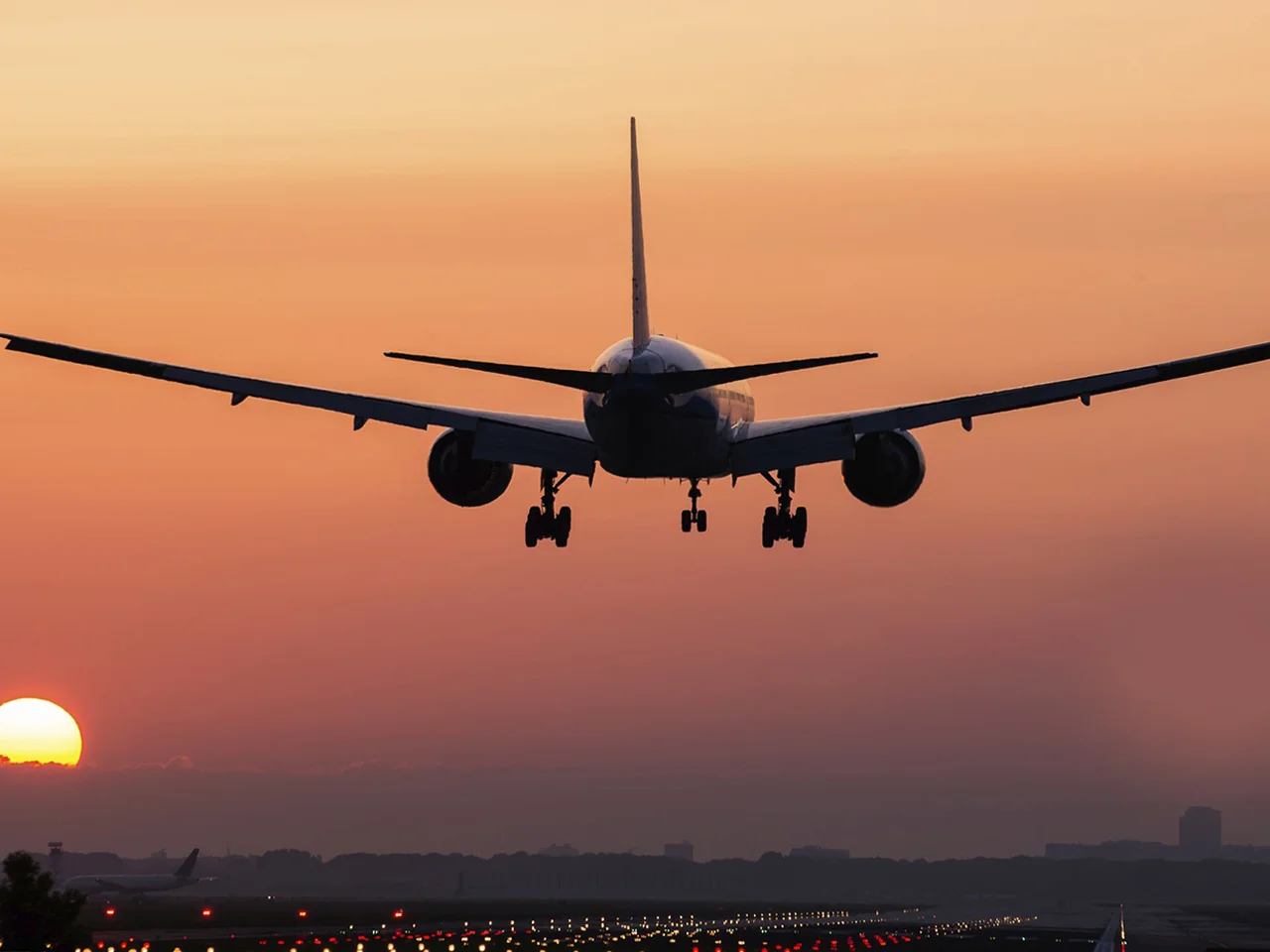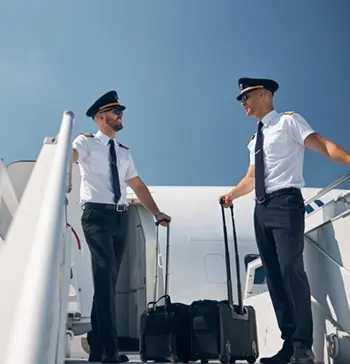
Pilot Training in Philippines For Omani Students
Why Aspiring Omani Pilots Fly Abroad for Training?
Aspiring Omani pilots often choose to pursue flying training abroad for various reasons. One primary factor is the limited availability of aviation training facilities and programs in Oman. While the country has made significant advancements in its aviation sector in recent years, including the establishment of flight schools and training centers, the options for pilot training may still be relatively limited compared to more established aviation hubs. Additionally, Omani students may seek training abroad to access a wider range of aviation programs, advanced training technologies, experienced instructors, and diverse flying environments that may not be readily available in Oman. Moreover, pursuing flying training abroad offers Omani students the opportunity to gain exposure to international aviation standards, practices, and regulations, which can enhance their skills and employability in the global aviation industry.
Why Do Omani Students Choose the Philippines for Pilot Training?
Omani students may choose the Philippines for pilot training due to several compelling reasons. Firstly, the Philippines is renowned for its reputable aviation training institutions and flight schools that offer comprehensive pilot training programs accredited by international aviation authorities. These institutions boast modern training facilities, state-of-the-art simulators, well-maintained aircraft fleets, and experienced instructors, providing Omani students with high-quality education and practical training conducive to their learning and career development. Additionally, the Philippines offers a favorable climate and diverse flying conditions, allowing students to gain exposure to various weather conditions, terrains, and airspace configurations during their training, which is essential for building versatile piloting skills. Furthermore, the Philippines is known for its relatively lower cost of living and affordable tuition fees compared to other pilot training destinations, making it an attractive option for Omani students seeking quality training at a reasonable cost.
Is the Philippines Positioned to Become the Top Pilot Training Destination for Omani Students?
The Philippines has the potential to emerge as a top pilot training destination for Omani students, given its favorable attributes and offerings in the aviation education sector. With its reputable flight schools, modern training facilities, experienced instructors, diverse flying environments, and relatively affordable costs, the Philippines presents an attractive option for Omani students aspiring to pursue pilot training abroad. Additionally, the Philippines’ commitment to maintaining high standards of aviation education and safety, along with its recognition by international aviation authorities, further enhances its appeal as a preferred destination for Omani students seeking quality pilot training. However, the Philippines may face competition from other established aviation training hubs globally, and its position as the top destination for Omani students will depend on various factors such as market demand, program offerings, industry partnerships, and regulatory frameworks.
Can an Omani Become a Pilot in the Philippines (PH)?
Yes, Omani students can pursue pilot training in the Philippines and obtain pilot licenses recognized by the Civil Aviation Authority of the Philippines (CAAP). The Philippines welcomes international students, including Omani nationals, to enrol in its accredited flight schools and aviation training programs to fulfill their aspirations of becoming pilots. Omani students must meet the eligibility requirements set by the CAAP and the respective flight schools or training institutions offering the pilot training programs. These requirements may include age restrictions, educational qualifications, English language proficiency, medical fitness standards, and other prerequisites necessary for enrollment in pilot training courses. Upon successful completion of their training and meeting all licensing requirements, Omani students can obtain pilot licenses from the CAAP, allowing them to pursue aviation careers and fly aircraft in accordance with Philippine aviation regulations.
Want to find out more about our pilot courses?
How Much Does It Cost to Study Pilot in the Philippines for Omani Students?
The cost of studying pilot training in the Philippines for Omani students can vary depending on several factors, including the type of pilot license sought, the duration of the training program, the flight school chosen, and additional expenses incurred during the training period. Generally, Omani students can expect to incur expenses related to tuition fees, flight hours, aircraft rental, instructor fees, study materials, licensing fees, accommodation, living expenses, transportation, and other miscellaneous costs. The total cost of pilot training in the Philippines for Omani students can range from USD 30,000 to USD 70,000 or more, depending on the aforementioned factors and individual circumstances. It is essential for Omani students to carefully consider their budget, financial resources, and funding options before embarking on their pilot training journey to ensure they can afford the associated costs and complete their training successfully.
Who Is Eligible for Pilot Training in the Philippines?
Eligibility for pilot training in the Philippines is typically determined by the requirements set by the Civil Aviation Authority of the Philippines (CAAP) and the respective flight schools or training institutions offering the pilot training programs. Omani students seeking to enroll in pilot training courses in the Philippines must meet the following eligibility criteria:
- Age Requirement: Omani students must be at least 17 years old to enroll in pilot training programs in the Philippines, as per CAAP regulations.
- Educational Qualifications: Omani students should have completed a secondary education or its equivalent, as specified by the CAAP and the respective flight schools or training institutions.
- English Language Proficiency: Omani students must demonstrate proficiency in the English language, both spoken and written, as English is the international language of aviation and the medium of instruction in pilot training programs in the Philippines.
- Medical Fitness: Omani students must undergo and pass a medical examination conducted by a designated aviation medical examiner (AME) to ensure they meet the medical fitness standards required for piloting aircraft, as per CAAP regulations.
- Financial Capacity: Omani students must have the financial means to cover the tuition fees, flight training costs, living expenses, and other associated expenses during their pilot training in the Philippines.
- Visa Requirements: Omani students must obtain the necessary visa or entry permits to study and reside in the Philippines for the duration of their pilot training program.
By meeting these eligibility criteria, Omani students can enroll in pilot training courses in the Philippines and embark on their journey to become licensed pilots.
Is the Philippines a Good Country for Pilot Training for Omani Students?
Yes, the Philippines is considered a good country for pilot training for Omani students due to several factors that make it an attractive destination for aviation education. Firstly, the Philippines is home to reputable flight schools and aviation training institutions that offer high-quality pilot training programs accredited by international aviation authorities. These institutions feature modern training facilities, state-of-the-art flight simulators, well-maintained aircraft fleets, experienced instructors, and comprehensive curricula designed to meet global aviation standards. Additionally, the Philippines offers diverse flying environments, favorable weather conditions, and airspace conducive to pilot training, allowing Omani students to gain valuable flying experience in various scenarios.
Moreover, the Philippines is known for its relatively lower cost of living and affordable tuition fees compared to other pilot training destinations, making it a cost-effective option for Omani students seeking quality education without compromising on training standards. The country’s English-speaking population, multicultural environment, and welcoming attitude toward international students further contribute to the positive learning experience for Omani students pursuing pilot training in the Philippines. Overall, the Philippines provides Omani students with the necessary resources, support, and opportunities to acquire the knowledge, skills, and qualifications required to pursue successful careers in aviation.
Which Country Is Cheapest for Pilot Training for Omani Students?
The Philippines is often regarded as one of the cheapest countries for pilot training for Omani students compared to other aviation training destinations worldwide. Several factors contribute to the affordability of pilot training in the Philippines for Omani students. Firstly, the country offers relatively lower tuition fees and training costs compared to many Western countries and other established aviation hubs. Flight training programs in the Philippines typically provide comprehensive training packages that include ground school instruction, flight hours, aircraft rental, instructor fees, study materials, licensing fees, and other necessary expenses at competitive rates.
Additionally, the cost of living in the Philippines is relatively lower compared to many Western countries, allowing Omani students to manage their living expenses more affordably during their training period. Accommodation, food, transportation, and other daily expenses are generally more budget-friendly in the Philippines, contributing to the overall cost-effectiveness of pilot training for Omani students. Moreover, favorable exchange rates between Omani Rial (OMR) and the Philippine Peso (PHP) further enhance the affordability of living and studying in the Philippines for Omani students, as their currency may have higher purchasing power in the Philippines.
Overall, the Philippines offers Omani students a cost-effective option for pilot training without compromising on the quality of education and training standards, making it an attractive destination for aspiring pilots seeking affordable yet comprehensive flight training programs.
OVERSEAS PILOT LICENCE CONVERSION – Convert Philippines Licence into Omani Licence
The process of converting a pilot license obtained in the Philippines into an Omani license involves several steps and requirements set forth by the Public Authority for Civil Aviation (PACA) of Oman. Omani students who have completed their pilot training in the Philippines and obtained a pilot license from the Civil Aviation Authority of the Philippines (CAAP) may seek to convert their Philippines license into an Omani license to fly aircraft registered in Oman or pursue employment opportunities in the Omani aviation industry.
The conversion process typically involves the following steps:
- Eligibility Assessment: Omani students must first ensure that they meet the eligibility criteria set by PACA for the conversion of pilot licenses. This may include holding a valid pilot license issued by the CAAP, meeting minimum flight experience requirements, and fulfilling any additional prerequisites specified by PACA.
- Documentation: Omani students must gather and submit the required documentation to PACA for the license conversion process. This may include their original pilot license issued by the CAAP, logbook records documenting their flight experience, medical certificates, identification documents, and other relevant paperwork as specified by PACA.
- Application Submission: Omani students must submit their application for license conversion to PACA along with the required documentation and any applicable fees. The application should be completed accurately and submitted within the specified timeframe to avoid delays in processing.
- Evaluation and Verification: PACA will review the submitted documentation and verify the applicant’s credentials to ensure compliance with the licensing requirements. This may involve assessing the applicant’s flight experience, training records, medical fitness, and other relevant qualifications.
- Examination or Assessment: Depending on PACA’s regulations, Omani students may need to undergo additional examinations, assessments, or proficiency checks to demonstrate their competency and proficiency in accordance with Omani aviation standards. This may include written exams, practical flight tests, or interviews conducted by PACA-appointed examiners.
- Issuance of Omani License: Upon successful completion of the conversion process and satisfaction of all requirements, PACA will issue an Omani pilot license to the applicant, allowing them to legally operate aircraft registered in Oman and pursue aviation career opportunities in the country.
It’s essential for Omani students to carefully follow the instructions provided by PACA and ensure that they fulfill all requirements for license conversion to avoid any delays or complications in the process. Additionally, Omani students may seek guidance from aviation authorities, flight schools, or legal advisors familiar with the license conversion process to navigate the requirements effectively and facilitate a smooth transition from their Philippines license to an Omani license.
Free Career Guide

Want to find out more about our pilot courses?
Download our free eBook to learn all about pilot training in the Philippines, including the qualifications needed, the training process, available courses, and career opportunities. Find out how you can take the first step toward a rewarding career in aviation.
Download Pilot Course Information Guide
Pilot Course For International Students
Join our exclusive pilot course tailored to your needs, offering valuable skills and insights.






